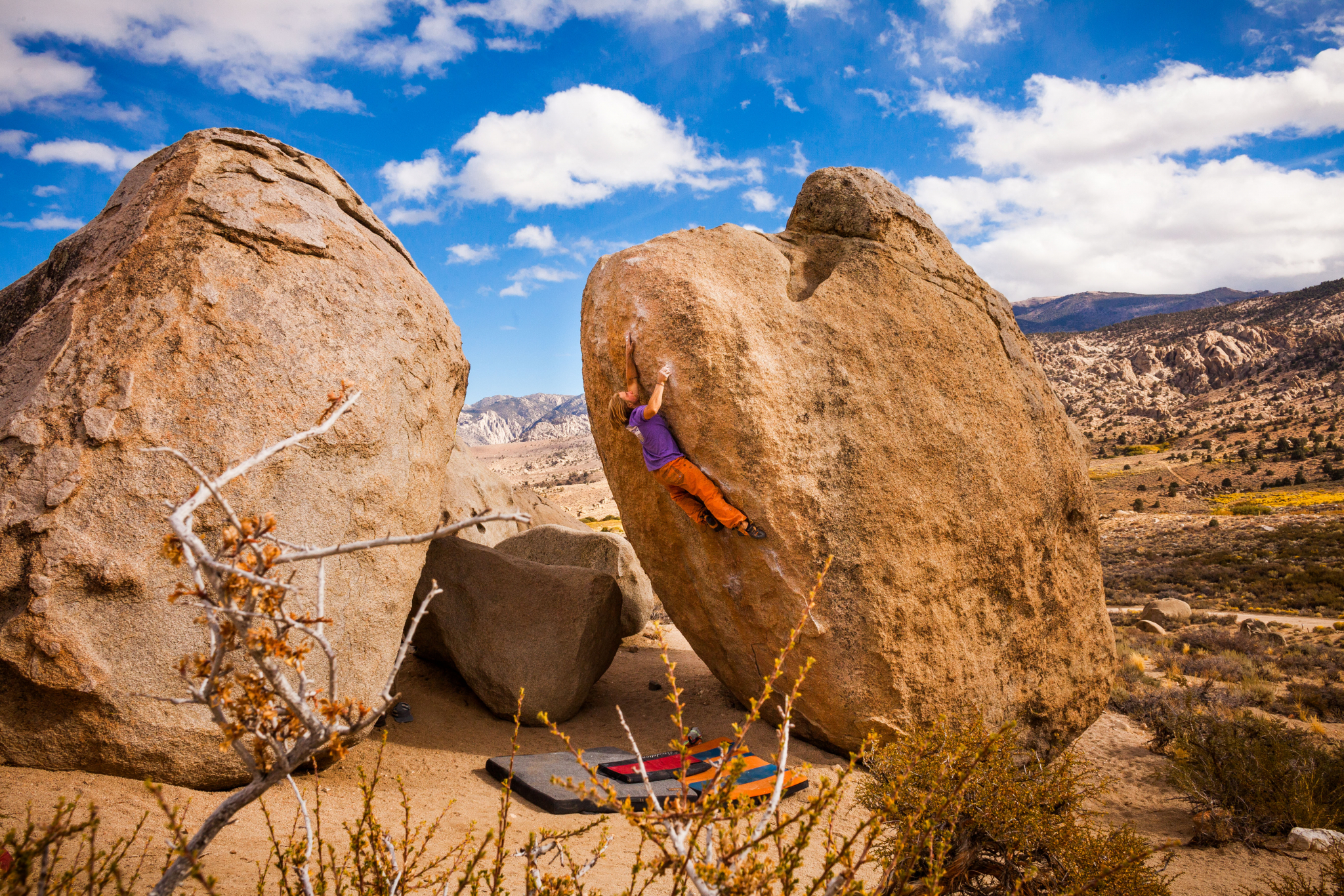Four Simple Strategies for Low-Impact Bouldering
The leaves are changing, the air is crisp, and the friction is downright unbeatable. That’s right—bouldering season is upon us, those blessed cold days where your fingers feel sticky enough to make your project feel a grade easier. But with the monumental increase in traffic many bouldering areas have seen over the last year, land managers are seeing more and more of an impact to these areas, which puts access at risk.
When it comes to protecting climbing landscapes, Access Fund has your back on the big stuff, like buying threatened crags, influencing policy in Washington, D.C., and putting Conservation Teams in the field to restore beat-down climbing areas. But we need climbers to pitch in on the everyday stuff—starting with specific practices that climbers can put into action to help conserve the environment. Luckily, it only takes a few simple strategies to keep your impact as low as possible, and you're likely already doing them—but here's a refresher before you head out for the season.

Use the Existing Parking and Trails
Minimizing your impact starts before you even get out of your car. Make sure you do your due diligence and only park in designated areas. You can find the beta on parking on your local climbing organization’s website, Mountain Project, guidebooks, state and local government websites, and more. If there’s a parking lot specifically for climbers, use it—even if the approach is a little longer. Skip the pullouts and roadside parking if there’s an established lot available. Impact starts with where we park, and when land managers see climbers flouting the simple idea of a parking lot, they’re going to start getting ideas about what other corners climbers are willing to cut.

Same goes for the approach. Most approaches have established trails—but many of them will also have social trails that branch off in all directions. Skip these and stay on the main trail for as long as you can. Social trails increase our impact on the vegetation and the natural beauty of an area. Always stay on the established approach trail to keep your impact low.
Put On Your Leave No Trace Hat
If you’ve been climbing long enough, you’ve seen it: an orange or banana peel tossed off to the side of the trail, the corner of a Clif bar wrapper tucked into a crevice between two rocks, toilet paper flowers peeking out of the ground uncomfortably close to your project. Increased traffic in bouldering fields only makes it more urgent for everyone to pack out everything they brought in with them. That includes human and pet waste—bring a wag bag! Before you head to the next boulder or hike out for the day, take a minute to look around carefully and make sure you didn’t leave any small bits of trash laying around.

Chalk It Up, Brush It Off
Speaking of leave no trace, a big part of low-impact bouldering is about protecting the quality of other people’s experiences. In areas where non-climbers recreate, chalk marks, and especially tick marks, are a straight-up eyesore on that otherwise handsome boulder just off the trail. By all means chalk up, and tick if you need to, but take a few minutes to brush your chalk off the boulder before you head out.

Pay Attention to Where You Put Your Pad
Crash pads can have a huge impact on bouldering areas. They can destroy vegetation, disturb fragile topsoil, and leave unsightly drag marks in the dirt. If you roll up to a boulder and it looks like you'll have to put your pad down on top of a budding patch of vegetation, consider climbing on another boulder that has a clear landing zone. Pick your pad up and place it where it needs to be—don’t drag it around, especially when you’re on the move between boulders.
The Bottom Line
It’s not hard to keep your impact to a minimum during bouldering season. Bouldering is arguably the easiest way to start climbing outside, making it a popular style for new outdoor climbers. Which means that our bouldering fields have been bearing a big part of the explosive growth in climbing over the last two years. It’s more important than ever that we’re all stewarding these special places whenever we’re in them. Luckily, just a few simple strategies like the ones above can keep our impact as low as possible to help sustain the future of climbing in your favorite bouldering area.
